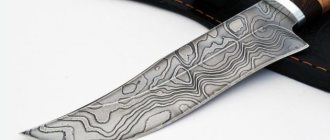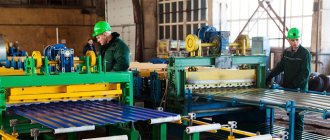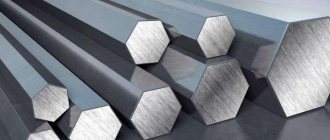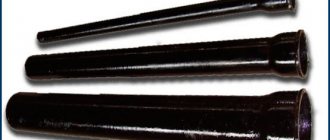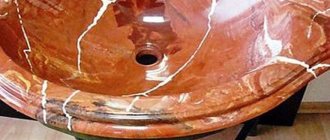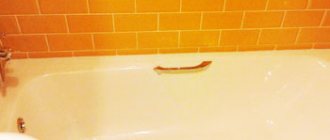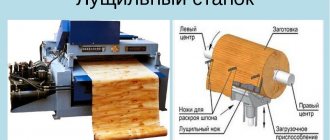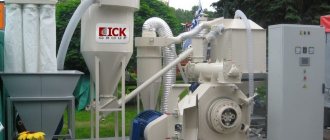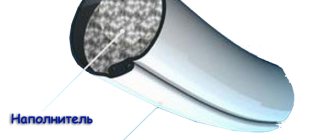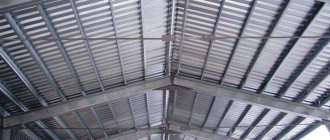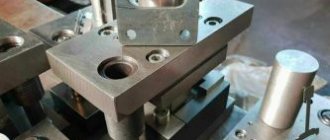Benefits of powder coating
- Minimum amount of waste. Coloring using high-quality equipment gives an efficiency of up to 98%.
- The sanitary and hygienic conditions there are changing for the better. This is an environmentally friendly technology, in which even in the oven the concentration of volatile substances does not reach the maximum permissible standards.
- No solvents are used, which results in less shrinkage and virtually no pores on the surface of the product.
- More economical use of material when painting. The powder coating hardens within half an hour and allows for a thicker, single-layer coating. Savings also lie in the absence of the need to maintain large production areas to dry the product in air. The harder powder coating is not damaged during transportation, which reduces packaging costs.
- The powder-painted surface is UV resistant, has electrical insulating and anti-corrosion properties.
- Powder paint makes it possible to create a palette of more than 5,000 colors.
- Reduced degree of explosion and fire hazard in production.
Standard, small and large particles
Standard particles
These are particles that the paint manufacturer wants to pack into boxes and ship to the customer. The size range of these particles is very strictly controlled. Standard particles ensure the formation of a powder coating with the highest possible quality and confident fulfillment of all requirements for mechanical and other properties.
Small particles
These are very small particles that can create problems with painting, such as frame defects where a thicker coating forms along the edge of the product. Fine powder particles settle onto the product at a different rate than standard particles, especially on the sides and back surfaces of the product, resulting in excessive variation in coating thickness. Excessive amounts of fine particles in powder paint can also cause guns and hoses to clog, as fine particles liquefy more easily than standard particles [2].
Large particles
These particles are too large to pass through the final separation screen. Some manufacturers re-grind these large particles to make a fine powder, some simply throw them away. It happens that these large particles end up in a box to be sent to the customer by mistake or due to a malfunction of the separation equipment. With electrostatic spraying, they will not be able to receive the necessary electrical charge, as standard particles usually do, and will most likely simply fall to the bottom of the spray booth. This leads to a decrease in the efficiency of the initial spraying of powder onto the product. In addition, it has been noted that an excessive amount of large particles in powder paint can lead to powder shedding in some areas of the surface of the product as it moves along the paint line, forming spots with reduced coating thickness [2].
Disadvantages of powder coating
- The powder is melted at temperatures above 150 0C, which makes it impossible to paint wood and plastic.
- It is difficult to apply a thin layer of paint.
- Equipment for dry painting is highly targeted. In large ovens it is ineffective to paint small parts, and in a small oven it is impossible to paint a large surface area.
- A separate container must be used for each color.
- It is difficult to paint irregularly shaped objects or prefabricated structures.
- Equipping a painting line requires a large investment.
- If defects appear on the surface, they cannot be eliminated locally; the entire product will have to be repainted.
- There is no possibility to do tinting; you can only use factory paints.
How do powder paints differ from similar materials?
Powder painting has its advantages, which include:
- Possibility of obtaining a durable coating. According to the study, the average service life is about 10-20 years.
- No streaks on the surface.
- High impact and bending strength.
- No pungent odor if you need to apply the material to a part.
- The painting process itself is automated; there is no need to undergo training or acquire special skills.
- The powder does not require special storage conditions. But the same cannot be said about liquid materials.
- In the case of powder painting, there is no need to use special coatings during transportation. After polymerization, the film on the surface of the structure will protect from mechanical damage at least for some time.
- The dyeing cycle is shortened, only about one and a half to two hours.
- Low material consumption and low waste.
- High physical and chemical properties. Including resistance not only to impacts, but also to corrosion and temperature fluctuations.
But are there any disadvantages to such a solution as painting metal with powder paint? Unfortunately, you can’t do without them, and sometimes it can outweigh the existing advantages.
For example, powder coating is definitely not suitable for wood and plastic; these materials are simply incompatible.
Without a one-time large investment, the painting process is generally impossible to organize. In addition, then the ability to operate the equipment will be severely limited. Finally, the technology should not be used when temperatures are low.
Pros and cons of powder coating of metal structures
Saving money. Thanks to the aspiration system, paint loss is only 1-4%.
High degree of production automation, allowing for quick training of workers.
Excellent strength and decorative properties of the coating.
Versatility. Using this method, any metal structures, including products of complex shapes, are painted.
At the same time, powder painting of structures is carried out only in specially equipped rooms and is limited by the internal dimensions of the polymerization oven. Local defects that arise during painting are not eliminated; in some cases, complete repainting of the product is required.
Another important nuance is that polymer paints cannot be tinted in the same way as liquid paints. The final color is determined by the batch recipe at the initial stage and cannot be changed during the process. This is a rather labor-intensive procedure that requires a spectrophotometer and appropriate software.
Advantages and disadvantages
It is no coincidence that the method of painting objects using powder paint is very popular not only among builders, but also among many home craftsmen. After all, it has such important advantages as efficiency and environmental friendliness , in which it is noticeably superior to traditional liquid paint. This is explained by the absence of solvents hazardous to health in powder paint and slower consumption. All paint particles that failed to adhere to the treated surface after spraying can be collected and used in the future for painting other objects.
Advantages of the material
The main advantages of powder paint are the following:
- Lack of the unpleasant odor that its liquid counterpart has.
- Dry paints are not prone to spontaneous combustion.
- The coloring procedure requires a minimum of time.
- If the result is not entirely successful, the product can be easily repainted.
- Coloring is carried out in one stage.
- It fits perfectly even on not very smooth surfaces.
- The paint coating is very uniform.
- There is no need to apply a primer coat before painting.
- Dry paints are not susceptible to corrosion processes and temperature changes.
Disadvantages of the paint composition
At the same time, this technology also has a number of significant disadvantages:
- Inability to use for wooden and plastic structures.
- To paint large objects, a large polymerization oven is required.
- Difficulty obtaining a thin layer of paint material.
- High price.
1.4. Areas of application of powder paints
The list of products that can be painted with powder paints is quite wide. There are industries where the rate of consumption of powder paints is growing particularly rapidly. An example is the coating of the internal surface of pipes for oil drilling and oil pumping, operating in conditions where factors such as high pressure, high temperatures and the presence of corrosive media can have a destructive effect on almost all, with rare exceptions, coatings.
In the United States, the automotive industry consumes about 15% of all powder coatings produced in the country, and their use is increasing due to the high quality of the resulting coatings, for economic reasons, as well as for environmental reasons. Powder paints are used by some car manufacturers to create intermediate primer layers for exterior coatings, as well as for finishing interior parts. The use of powder materials for finishing various automotive parts is increasing, where reliable protection is required along with a good decorative appearance. Wheel rims, bumpers, mirror frames, oil filters, engine blocks, electric battery housings, springs are just some of the many car parts that are powder coated. Powder varnish compositions for use over the main exterior coatings of automobile bodies are an alternative to liquid solvent-soluble varnishes.
The consumer goods industry is not the only market area using thermoset powder coatings; it accounts for about 17% of their total consumption. As the trend to replace silicate enamels with powder coatings develops, the use of powders in the consumer goods market will continue to grow. The areas of application of powder materials also include painting housings and casings of various products, freezers, drying drums, washing machine housings, etc.
The production of garden equipment and tools is also a large consumer of powder paints (about 7% of their total consumption). Industrial production consumes about 56% of all powder materials. By industrial production we mean all others, with the exception of the above-mentioned automotive industry, production of consumer goods, architectural structures and garden equipment and tools.
Large potential areas of the consumer market could be the rolled aluminum products industry, which currently represents 4% of the total North American powder coating consuming market. Recent advances in the development of polyether-triglycidyl isocyanurate (TGIC) systems and materials based on fluorine-containing polymers have allowed powder paints to compete with liquid systems for painting architectural structures in terms of durability, weather resistance and discoloration resistance. Some of these coatings have been successfully used in various construction areas for more than 15 years.
Powder paints in the consumer market are the fastest growing segment in the structure of all paints and varnishes. Of the approximately 5,000 types of powder coatings, about 1,000 are used on the North American market (Table 1.1).
Table 1.1
| Metal substrates | |
| Heavy, transport and agricultural mechanical engineering | Machine tools, pipes (gas, oil, land reclamation and water supply systems), car and motorcycle parts, bicycles |
| Instrumentation, electrical, radio and electronic industries | Transformers, capacitors, devices, tools |
| Production of consumer goods, household appliances | Refrigerators, water heaters, air conditioners, heating radiators, vacuum cleaners, metal furniture, sewing machine parts, housings for gas and electric stoves, washing machines |
| Construction | Fittings, sports ground equipment, lighting equipment, metal window frames and slate |
| Non-metallic substrates | |
| Construction | Facade facing tiles, asbestos-cement, ceramic; tiles |
| Production of consumer goods | Decorative ceramic products, plastic products, wood products |
Electrostatic spraying
Powder coating technology by electrostatic spraying.
Rice. 1 – Corona charging technology
Its popularity is due to the following factors: high charging efficiency of almost all powder paints, high productivity when powder coating large surfaces, relatively low sensitivity to ambient humidity, suitable for applying various powder coatings with special effects (metallics, shagreen, mauara, etc. ).
Along with its advantages, electrostatic spraying has a number of disadvantages, which are caused by the strong electric field between the spray gun and the part, which can make it difficult to apply powder coating in corners and in deep recesses. In addition, incorrect selection of electrostatic parameters of the sprayer and the distance from the sprayer to the part can cause back ionization and degrade the quality of the polymer powder coating.
Equipment for powder coating - an electrostatic spray gun is included in the standard Alfa Color powder coating complex.
Rice. 2 – Faraday cage effect
The Faraday cage effect is the result of electrostatic and aerodynamic forces.
The figure shows that when powder coating areas affected by the Faraday cage effect, the electric field generated by the spray gun is at its highest intensity at the edges of the recess. The power lines always go to the closest grounded point and are more likely to concentrate along the edges of the recess and protruding areas, rather than penetrating further inside.
The Faraday cage effect is observed in cases where powder paint is applied to metal products of complex configuration, where an external electric field does not penetrate, so applying an even coating to the parts is difficult and in some cases even impossible.
Rice. 3 – Reverse ionization
Back ionization is caused by excessive free ion current from the charging electrodes of the atomizer. When free ions hit the powder-coated surface of a part, they add their charge to the charge accumulated in the powder layer. But too much charge accumulates on the surface of the part. At some points, the amount of charge is exceeded so much that micro sparks jump through the powder, forming craters on the surface, which leads to a deterioration in the quality of the coating and a violation of its functional properties. Reverse ionization also contributes to the formation of orange peel, reducing the efficiency of sprayers and limiting the thickness of the resulting coatings.
To reduce the Faraday cage effect and reverse ionization, special equipment has been developed that reduces the number of ions in ionized air when charged powder particles are attracted to the surface. Free negative ions are diverted away due to the grounding of the atomizer itself, which significantly reduces the occurrence of the above-mentioned negative effects. By increasing the distance between the spray gun and the surface of the part, you can reduce the spray gun current and slow down the reverse ionization process.
Type of powder coating
Metal painting takes place in three stages. Powder paint is applied to the prepared surface. After spraying the paint composition, the part is sent to an oven for polymerization.
The following equipment is required for painting:
Double station spray chamber
- Application chamber. Equipped with air suction to collect paint, return it or dispose of it.
- Pneumatic spray gun. Together with the feeder it forms a tool for applying powder coating.
- Feeder.
- Polymerization chamber. Creates sufficient temperature to complete the process.
The installation, consisting of a spray gun and a feeder, creates a mixture of paint with air, forms a torch, and imparts an electrical charge to paint particles. The shape of the torch depends on the installed gun nozzle. Charged particles, settling on the workpiece being processed, are held by the force of electrical attraction.
No. 1. The essence of the powder painting method
Compared to many existing paint materials, powder paint is a new type of coating. The technology was developed in the 1950s and has improved significantly since then and is now used in many industrial applications.
Powder paint is a multicomponent disperse system, the basis of which is a colorless, water-insoluble powder. Coloring pigments, hardeners, film-forming resins and other additives are added to it to ultimately obtain a mixture that has all the qualities necessary to create a coating. The size of individual grains of such a mixture is about 10-100 microns. There is no need to add a solvent, which is the main advantage of the method. Painting can be done quickly, without odor and harm to the environment.
The powder coating process consists of applying powder paint to a previously prepared, cleaned surface and polymerizing the resulting layer at high temperature. The technology of applying powder to the surface has its own nuances and features, which determine the powder coating option. The most commonly used methods are:
- electrostatic spray;
- application by air flow;
- electrostatic spray with air flow;
- application by flame.
The electrostatic spray method is the most popular. Paint particles are given an electrical charge by an external source or friction. The surface to be painted receives an opposite charge. An electrostatic field arises, thanks to which paint particles successfully settle on the surface. Those particles that never “stick” are subsequently captured and can be reused for coloring. After the powder layer is applied, the product is sent to the polymerization chamber, where the paint bakes.
The second method involves preheating the surface to be painted. The paint particles are kept suspended by the air flow. Falling onto a heated surface, the particles “stick” and melt, forming a coating. The thickness of the layer will depend on the degree of heating of the surface and the duration of contact with the powder. Often additional heating is not required, but in some cases heating in the chambers is used.
The third method is something between electrostatic and air spraying. The surface to be painted is not preheated, but the air molecules are ionized, as a result of which the paint particles, which are held by the air flow, are charged. A surface with a neutral charge is quickly covered with a uniform layer of charged paint particles. The technology is suitable for painting small and relatively simple-shaped objects.
The flame painting method is a new word in the field of powder coating. The paint is melted with compressed air, after which it is fed into a special gun and heated by burning propane. The molten substance is applied to the surface. Additional temperature exposure in the form of baking in an oven is not required, so even not the most heat-resistant materials can be coated in this way. The method is used to paint large objects or elements that are fixed in such a way that it is difficult or impossible to dismantle them.
In any case, a monolithic durable coating is formed on the surface as a result of melting powder paint. The hard film is produced by curing (thermoset paints) or cooling (thermoplastic paints).
Required Equipment
In order for the process of self-painting to be practically no different from the factory one, it is necessary to choose a suitable place where the work will be carried out.
When the premises have been found, you need to collect and prepare the necessary equipment:
- oven for polymerization (drying);
- constant voltage source (about 25 kV);
- powder paint sprayer (gun);
- LMB.
Accuracy and a little experience will not hurt in the work. But if it’s not there, it doesn’t matter; by following the instructions, you can avoid most mistakes and get quite a decent result.
Making a furnace
Polymerization is an important step in the hardening of powder paint. If this item of work is omitted, the paintwork will not adhere to metal surfaces. Therefore, equipment such as a furnace - also called a polymerization chamber - is necessary first of all. This thing is expensive, so you can make it yourself, from scrap materials. We will need (the polymerization chamber will have dimensions of 2x1x1 m):
- profile pipe;
- non-flammable thermal insulation (basalt slab);
- sheet metal (can be ordered by size);
- tangential fan;
- Heating elements.
The oven assembly instructions consist of the following steps:
- Weld a frame from the profile.
- Put insulation in it.
- Cover the walls with sheet metal. Finish the outside with gypsum fiber.
- For convection in the chamber, install a tangential fan, welding it with a narrow outlet and a wide inlet.
- Insert the fan into the chamber. It will take in air at the top, drive it through the heating elements, expel it at the bottom, and then distribute it throughout the entire volume of the chamber.
- Install the heating elements along parallel walls and connect them according to phase distribution.
- Close the heating elements, leaving the fan open, the main part of which should be located outside the chamber (so as not to melt the winding).
- Install an electrical panel. True, it is better to entrust this work to a specialist.
The resulting equipment - a polymerization chamber - will have a power of 12 kW when warming up and 6 kW in operation.
Important! The energy source in such powder paint drying ovens can be not only electricity, but also natural gas and diesel fuel.
Painting tool - gun
To apply powder paint to a product, a special device is required. This is an electrostatic spray gun or a tribostatic powder spray gun. But buying expensive equipment for rare use is not advisable. Since in our case everything is made by hand at home, such a device can be made in about 10 minutes. Such a gun is easy to use, cheap and practical. The transition from one paint to another takes a few seconds.
Design and equipment of a gun for powder painting
How to make a powder paint gun:
- Take a regular plastic 1.5 liter bottle. The main thing is that it is dry and clean.
- Fill it 1/3 with powder paint, screw it with a metal plug.
- Make small holes in the cork. The more holes, the better the application. Clean the outside of the plug from any burrs left after piercing.
- Connect the positive wire from the high-voltage source to the plug.
For this purpose, you need a converter that can deliver 25,000 volts DC. These are used in stun guns, lighters for gas stoves, boilers and speakers. They can be powered by batteries or accumulators, converting 3-6 volts into the required 25 kV.
Use caution when working with high voltage. It is best to have the converter assembled by a qualified electrician.
After all the manipulations, you get a pretty decent pistol.
Little things you can't do without
Before starting painting, you need to carefully ensure that all operations take place under ideal conditions:
- Excellent lighting is essential. Use fluorescent lamps. Powder paint adheres perfectly to a regular lamp.
- You need good ventilation with two motors (inlet and outlet). Additionally, you will have to wear a gauze bandage, or better yet, a professional respirator.
- We will have to invent a way to collect the remaining powder paint. In the initial stages, use an old powerful vacuum cleaner.
When everything is carefully prepared, you can start painting the necessary parts yourself.
Types of powder paints
All produced types of powder paints can be divided into two large classifications - thermoplastic and thermosetting. It all depends on what film-forming substances are used in the composition.
Thermoplastic powder paints
Thermoplastic paints contain thermoplastic film formers. This type of paint forms a coating without creating chemical reactions; the particles are fused and then these alloys are cooled. Thermoplastic paints are based on polyvinyl butyral, polyamide, polyvinyl chloride and polyethylene.
The purpose of polyvinyl butyral paints is to have protective and decorative functions; they are petrol-resistant, electrically insulating and abrasion-resistant.
Polyvinyl chloride paints are resistant to the influence of detergents and are not afraid of atmospheric conditions. These paints are used to paint surfaces both indoors and outdoors.
The most popular and widespread are polyamide paints. When applied to the surface, they look most beautiful and aesthetically pleasing, they are durable and hard, they are not afraid of being under the influence of solvents and abrasion. They are used on parts indoors and for outdoor objects.
Paints based on polyethylene are usually used to protect the surface from various influences. Their physical, mechanical and anti-corrosion characteristics are very high. They perfectly isolate from the effects of electrical voltage. But this type of paint has two significant drawbacks: the coatings they form often crack, and such paints are not sufficiently resistant to weathering.
Thermosetting powder paints
Thermoset film former is an ingredient in thermoset paints.
The formation of such surfaces occurs by melting particles among themselves and subsequent chemical processes. They are not soluble and not meltable. Thermosetting paints include polyester and epoxy resins, polyurethane, and acrylates. Most often, such coatings are used in the mechanical engineering industry. Epoxy-based paints are quite durable, they are not afraid of the effects of solvents, but if they are overheated, they acquire a yellowish tint. If such a surface is exposed to ultraviolet radiation, the top layers of the coating are subject to destruction, their consistency becomes similar to chalk.
Polyester based paint should be used for exterior use. The top layer of such paint, due to exposure to open, constantly circulating air, is not subject to destruction.
Paints that contain polyurethane are characterized by a stable shine. Such paints have protective properties, they are abrasion-resistant and protect surfaces from the effects of friction. Surfaces coated with polyurethane paint are also protected from the effects of atmospheric influences, solvents, liquid fuels, water and mineral oils. And also such paints have an impeccable decorative application, their coating is similar to the appearance of crinkled silk.
Acrylate-based paint also has protective functions. It protects objects processed by it from various influences, including alkalis and temperature changes. For a long time, a surface with such a coating will delight you with its appearance.
Criterias of choice
One of the key issues that the master must decide is the choice of a specific powder paint for processing the object. This is very important, since the quality of the product’s coating directly depends on the material. The stores offer a large number of different types of dry paints with different characteristics.
A good paint must satisfy certain functional requirements . The main ones are:
- Mechanical resistance. The material must be wear-resistant, durable, and resistant to scratches, impacts and abrasion.
- Temperature resistance. The paint is required to be resistant to high temperatures, as well as heating, both periodic and constant.
- Electrical insulating properties. Most polymer coatings are dielectrics, which makes it possible to use them to isolate finished products from electricity.
- Chemical resistance. The selected material must tolerate interaction well with oils, fats, detergents, gasoline and other substances with which the coating will come into contact during operation.
- Rust resistant. When choosing paint, it is important that it is resistant to chemicals and moisture - the main causes of corrosion.
Additionally, the paint may differ in decorative properties:
- Smooth coatings. Available in various color options.
- Textural. May include certain special effects, for example, orange peel, wrinkling, etc.
- Transparent. Used to protect metal, plumbing and other products.
- Tinted. They allow you to highlight metal or a substrate for various types of materials - metal, bronze, etc.
- Gloss level. Depending on this, there are semi-gloss and glossy coatings, as well as coatings with varying degrees of gloss - from dull to high.
Polymerization or baking
The painted metal product is placed in the oven. In it, under the influence of constant temperature, the part is heated and the paint polymerizes. The particles fuse to form a film, then harden and cool. The whole process takes about 15–30 minutes. Curing time depends on the size of the product and the type of oven.
The temperature in the polymerization chamber is kept within 150-200 0C and depends on the type of paint. The molten powder is able to fill all micro-irregularities, which gives good adhesion to the metal surface.
The paint receives all the necessary properties at the hardening stage: strength, appearance, protection. After this, the product should cool for 15 minutes. Otherwise, the coating may be damaged and dust and dirt may adhere to it.
Powder painting equipment: selection and self-production
Painting with powder paint at home in any case requires the availability of special equipment. Some are available for homemade production, and some are advisable to purchase, otherwise it will be difficult to get a good result.
Painting with powder paint at home in any case requires the availability of special equipment.
Spray
The distribution of the powder occurs using a spray gun, and this stage is the most important for obtaining a high-quality, beautiful layer, so the choice of tool must be done with special attention. When particles of the product pass through the device, they become charged and can attach to an oppositely charged base.
There are three types of sprayers:
- Electrostatic, the charge occurs due to a special effect, any paint can be applied;
- Tribostatic, here the charging of particles occurs due to the speed of their departure from the nozzle when they rub against each other. To achieve the effect, you need to create a certain level of humidity, the length of the hose is also selected, the parameter depends on the type of compressor;
- The manual type is more suitable and affordable for home use.
Any type of sprayer must be grounded.
The distribution of the powder occurs using a spray gun, and this stage is the most important for obtaining a high-quality, beautiful layer.
Painting chamber
Powder coating technology cannot be performed without a painting chamber; this device is required to obtain the final result. The cost of the camera is high, but to create it yourself, you will need electrical knowledge.
Powder coating technology cannot be performed without a painting chamber; this device is required to obtain the final result.
DIY spray booth
You can assemble a powder coating booth yourself; for this you will need to prepare the following materials:
- Profile pipe for the frame part;
- Galvanized steel to cover the chambers inside and out;
- Basalt or mineral wool, which will serve as equipment insulation;
- Heating elements for heating, how many of them are needed, are decided taking into account the size of the chamber;
- Automatic elements that will help in adjusting and monitoring temperature indicators;
- 2 thermocouples, they are installed at the bottom and top to more accurately determine the indicators.
Proceed as follows:
- A frame is made from profiles; if large objects are to be painted, you can select a separate room, for example a garage;
- The outside cladding is made of iron, and heat-insulating material is used on the inside. It is important to ensure complete sealing;
- To collect the remaining powder after painting, it is advisable to make the floor covering from a grid;
- Forced ventilation is created.
One side can serve as a wall in the room, and the frame can be covered with a thick curtain.
The powder coating booth can be assembled with your own hands.
Bake
To melt the applied particles of powder paint, you need a special oven; after heating, they will reliably adhere to the surface. It is important to create the right temperature. During polymerization, the object itself must be completely heated.
To melt the applied particles of powder paint, you need a special oven; after heating, they will reliably adhere to the surface.
Making a furnace
Creating a furnace is a complex process; you will have to try to make suitable equipment. The construction is done as follows:
- It is necessary to make a drawing, it is important that the doorway is connected very tightly with the walls so that heat is not lost.
- First, the outer frame is assembled, after which the inner frame with insulating elements must be placed.
- Jumpers are made on a small frame to secure the thermal insulation to them.
- The selected type of insulating wool is attached.
- The frame is sheathed with iron sheets, they should fit tightly, the sheets are folded at the corners. For the external frame, gypsum fiber sheets can be used.
- They make devices where the products will be hung.
- The tangential fan is being completed, and boxes for inlet and outlet are attached to it. The input type is made larger.
- Heating elements are mounted on one wall; how many of them to install is determined by the size of the oven; thermometers are attached to both sides of them.
- Access to a 380-volt network is created; the connections must be connected to a special panel where there are machines and a control unit.
- The door is installed and the operation is checked.
- The heating elements are covered with a steel box with holes at the top and bottom to allow air to flow freely. A slot is made above the heating element in order to insert the narrow part of the fan box. The rest will remain on the outside.
The operation of the oven is checked on a small product where paint has been applied.
Creating a furnace is a complex process; you will have to try to make suitable equipment.
Benefits of Powder Coatings
Metal powder painting technology has many advantages:
- Excellent physical, chemical and decorative properties of coatings that cannot be achieved by other painting methods, including a rich palette of possible color solutions.
- Good performance properties of coatings
- Durability of products painted with powder paints
- One-layer coating thanks to 100% dry matter content, which means the use of powder paints is economical
- Low porosity
- Improved impact resistance and anti-corrosion properties compared to other paints
- There is no need to control viscosity, since powder paints are supplied directly to the consumer in ready-to-use form
- Losses when painting with powder paints are 1-4%, and, for example, when using liquid paints - about 40%
- Coating hardens within 30 minutes
- No need for large powder paint storage areas
- Minimum damage to painted parts during transportation and reduced packaging costs
- Environmental safety of powder coating
In view of all the above advantages of this method of metal coloring, most industrialists today give their preference to it.
POWDER COATING
The range includes metal powder painting services, which have gained great popularity in the field of painting metal products.
With its help, the surface acquires high decorative properties, anti-corrosion, and impact resistance. She is not afraid of: precipitation, sunburn, high and low temperatures. No paint product can match the performance benefits of powder paint.
Powder coating of metal allows you to obtain high-quality and reliable polymer coating for doors, gates, fences, window grilles and stairs. After the powder coating process, the product becomes resistant to organic solvents, gasoline, acid solutions, and alkalis. Polymer powder painting is absolutely environmentally friendly, its technology does not require any solvents, is non-toxic and non-flammable.
Scope of application of powder painting
Powder polymer coating technology is used:
- in the production of facade elements,
- window profiles,
- metal furniture,
- roofing materials,
- office and garden furniture,
- gate,
- fences,
- furniture fittings,
- car rims,
- instrument panels,
- radiators,
- refrigerators,
- sports equipment,
- doors and almost any other metal surfaces that need to be reliably protected from corrosion, excluding drips on vertical surfaces and wrinkling of coatings during drying.
We provide powder coating services in the following areas: equipment, roofing materials, household and medical equipment, heating batteries, profiles, structures, radiators.
Powder paints
The ArtMetal company offers polymer coating services for your metal products of any degree of complexity. We use paints from well-known and time-tested manufacturers, the colors of which are measured on the RAL scale. Preparation of the product surface for the powder painting process includes: cleaning, degreasing, priming (at the customer’s request), drying. Sometimes it is enough just to degrease with an organic solvent.
In addition to the usual smooth, matte and glossy powder paints that many people use, we actively use paints with various textures and special effects:
- antiques
- shagreens
- metallics
- polymer varnishes
- paints with leather, silk, wood effect
RAL color catalog
| RAL |
Painting type “Crocodile skin”
Antique paint
Metallic paint
“Sahara” type painting
Areas of application
The process of polymerization of powder particles applied to the surface of the product is carried out within 40-60 minutes at a temperature of 150-200°C in special ovens. It is for this reason that the scope of application of powder coating technology is limited exclusively to metal products of various purposes and sizes. The thermal polymerization process does not allow this method to be used for painting plastic or wood.
Powder coating covers:
- forged products for indoor and outdoor use;
- aluminum and galvanized profiles;
- home and industrial furniture made of metal;
- housing elements of household appliances;
- static parts of machines and mechanisms;
- Sports Equipment;
- neutral industrial equipment.
Metal powder painting technology is used in situations where high corrosion resistance of a metal product is extremely important. Dry polymer powder paints are also used when it is necessary to ensure the mechanical and chemical resistance of the anti-corrosion coating due to the presence of difficult operating conditions.
Powder coating technology
It is possible to obtain a high-quality decorative coating on a metal product using powder paint only by strictly following the painting technology. The technique is that dry paint particles are sprayed onto a cleaned and degreased surface. An even, uniform layer of powder on the product is ensured by the fact that paint particles with a positive charge easily stick to the negatively charged metal surface. In order for these particles to turn into a layer of paint, they are baked in an oven at a temperature of 150-250 0C.
Powder coating technology consists of three stages:
- Preparation;
- coloring;
- polymerization.
Preparing the surface of the product for painting
This stage is the longest and most difficult. The further quality of the coating will depend on the preliminary preparation of the metal surface: strength, elasticity. The preliminary stage includes:
- cleaning from contaminants;
- degreasing;
- phosphating
Rust, oxides, and dirt are removed from the metal surface. If the old coating is left, the paint will not adhere well to the surface and the coating will not last long.
The most effective method for removing rust and oxides is shot blasting. For this, sand, steel or cast iron granules are used. Small particles under strong pressure or centrifugal force are applied to the metal and knock off contaminants from it.
Chemical cleaning or etching can be used. Hydrochloric, sulfuric, nitric or phosphoric acids are suitable for this. This is a simpler method that allows you to process a larger number of products than shot blasting. But it requires subsequent washing of the product from acids, which leads to additional time and financial costs.
Phosphating a product is similar to priming. The surface is treated with a composition that creates a phosphate film that improves adhesion.
Powder painting technology for metal products
- Surface preparation.
When preparing a product for painting, it is necessary to take into account that the surface must be treated not just with a film-forming liquid, but also with a powdery material that should evenly cover the entire surface. At this stage, you must solve two problems: clean the surface of all possible contaminants and roughen it. Surface preparation can be carried out either mechanically or chemically (for example, degreasing or etching).
- Application of powder materials.
Powder painting of metal products is carried out:
- by electrostatic spraying;
- gas-flame method;
- by immersion in electrified powder.
Electrostatic spraying is the simplest and most versatile method. That's why he became the most popular. Technologies for coating flat surfaces are similar to those used in copying equipment (magnetic brushes and rollers). Unlike the previous one, the gas-flame method is used extremely rarely, since the resulting coating is uneven and of poor quality. Immersion in a layer of electrified powder is most popular in the production and processing of products of the same type. As a rule, a special conveyor line is equipped for this purpose. In addition to the above methods, plasma spraying is used today, which involves the use of heat-resistant powders (their particles are heated using low-temperature plasma). This method is suitable for applying a thin layer of coating to heat-resistant products.
We recommend articles on metalworking
- Steel grades: classification and interpretation
- Aluminum grades and areas of their application
- Defects in metal products: causes and search methods
Thanks to the interaction of the surface and the paint (electrostatic forces of neutrality and charge), powder painting of metal products is carried out evenly and the particles are securely fixed. Before “coming out” of the gun, the paint particles are electrified:
- the electrodes create a coronary charge field;
- due to contact with the surface of the equipment (gun).
Typically, the particles have a negative charge, the value of which corresponds to the range in which the particles will be retained on the surface until a liquid film corresponding to the technology appears. The process can be regulated in two ways: the particle speed, which depends on the friction force, area and material, and the properties of the electrode.
Powder painting of metal products by electrostatic spraying is suitable for both horizontal and vertical surfaces. Grounding provides a metal product with zero charge.
- Formation of a liquid film (polymerization).
Powder materials, when heated to a viscous-fluid state, form a film. This process works as follows:
- the material is deformed and acquires viscous fluidity;
- air is removed;
- the surface of the substrate is wetted with the resulting liquid.
The production of pipes and metal profiles is carried out by applying powder to preheated parts in a “boiling layer”: the concentration of heat leads to polymerization.
If thermosetting paints are used for coating, exposure at high temperatures leads to chemical hardening of the film. This effect is achieved through polymerization or polycondensation of the particles that form the coating. This painting method cannot be called economical, since it entails an increase in time and material costs with low labor productivity. To quickly cure the film, it is more profitable to use compositions that act under ultraviolet irradiation and are based on thermosetting resins.
- Final formation of the coating.
The film is finally formed when the product cools completely. This can occur under conditions that differ in the duration of cooling and external influence. The coating formation conditions can influence its quality and adhesion forces, changing them by several tens of percent. Fast and slow cooling are used depending on the type of dyes. The internal stress of the coating can be reduced to zero if plasticizing polymer media are used.
With thermoplastic dyes, you can use the technique of “duplicate sintering” - this makes it possible to eliminate coating defects. This cannot be done with thermosetting paints.
Bottom line
Powder coating is the most economical, fastest and environmentally friendly way to obtain a reliable protective surface on metal. The service life of the product is significantly increased, and the decorative coating can be varied not only in color, but also in structure.
The difficulties of the technology lie in strict adherence to all stages. This requires a special production line. Problems may arise when:
- painting large items;
- products of complex shape;
- structures made of mixed materials.
The dry method has undeniable advantages over other types of staining:
- waste-free;
- variety of paints by cost and properties;
- high physical and mechanical properties of the painted metal surface.
For these reasons, powder coating has become one of the most popular modern methods of protecting metal from damage.
Methods of working with powder paint and required equipment
Metal powder painting technology involves three main methods of applying fine powder to the metal surface of the product being painted.
- Use of directed air flow. The metal product is heated and evenly coated with powder paint using a spray gun. With this method, it is important to accurately determine the required temperature so that the coating is evenly polymerized. In addition, additional heat treatment after polymerization will be required.
- Electrostatic spraying of powder paint is the most common method. Having received a positive charge from a high-voltage source, powder particles adhere to the surface of a negatively charged metal product. This ensures uniform distribution of the material and prevents dripping or shedding. Any powder that does not adhere is collected and reused.
- Flame coloring. Particles of powder paint pass through the flame of a propane torch and, already in a semi-liquid molten state, fall on the surface of the metal being processed. In this case, the product itself is not subjected to heating. This method is used extremely rarely and only for painting large items.
The technology of powder painting of metal includes three stages: preparation, coloring and polymerization of the applied coating. Each of these processes requires special equipment.
The classic powder coating line consists of four main elements:
- chamber for applying (spraying) powder;
- electrostatic sprayer;
- a compressor for pumping compressed air into the spray gun;
- oven for polymerization.
Metal products to be painted, especially large ones, must be carefully moved from one station to another during the painting process so as not to damage the applied powder paint that has not undergone polymerization. For this purpose, the lines are equipped with transport devices to accurately move products from the spray chamber to the thermal chamber. Most often, monorails with hooks on rollers, etc. are used for this.
